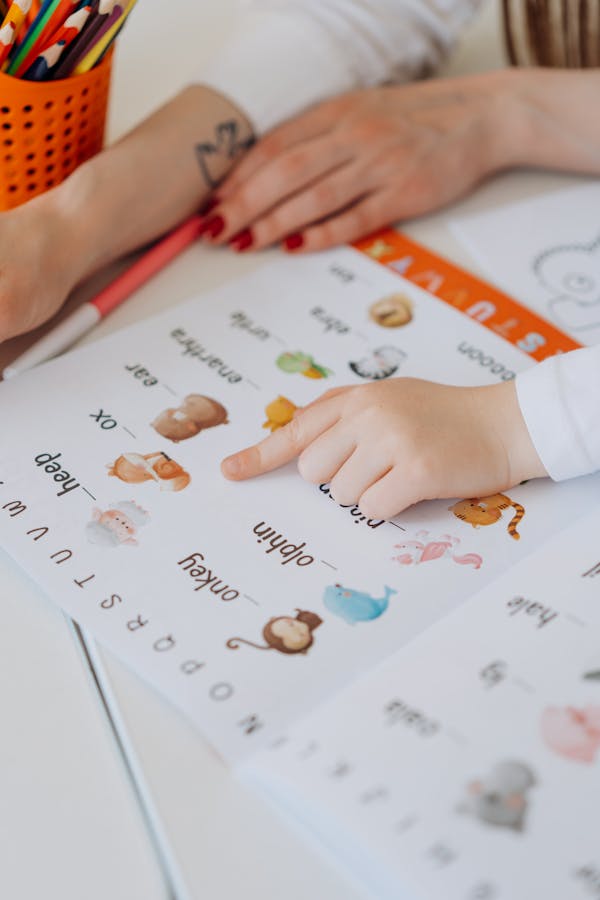When’s the Best Time for Your Child to Learn a Second Language?

(Hint: Sooner Than You Think!)
If you’ve ever thought, “I want my child to learn Spanish, but is it too late? Too early? Am I already behind?!”—take a deep breath, mama. You’re not alone!
The truth? The best time to start is whenever you can—whether your little one is just learning to babble or already negotiating bedtime extensions like a pro. But if we’re talking science, there is a golden window for language learning. Let’s break it down so you can make the best choice for your family.
Babies & Toddlers (0-3 Years): The Language Superstars
Think of your baby’s brain like fresh playdough—soft, moldable, and ready to soak up everything. From the moment they’re born, they’re listening, processing, and storing sounds like tiny linguistic geniuses.
Why this stage is amazing for language learning:
? They can hear and mimic sounds from any language.
? They’re not afraid of making mistakes (because, well, they don’t even know what mistakes are).
? They naturally pick up pronunciation flawlessly—no awkward accents here!
How to introduce a new language:
Play Spanish songs during playtime or bedtime.
Read board books in Spanish (lots of pictures and pointing and showing with gestures – just like you did with English!) .
Narrate your day: “Vamos a cambiar el pañal” (Let’s change your diaper).
Bottom line: If you start now, they’ll absorb the language like it’s second nature.
Preschoolers (3-6 Years): The Language Sponges
Your chatty little human is now forming full sentences (and possibly never stopping). This is a perfect time to introduce a second language because their brains are still incredibly flexible, but you might get a little more resistance (just being honest, from experience…).
Why this stage is amazing for language learning:
? They love repetition—hello, We don’t talk about Bruno on repeat—which is great for learning new words.
? They’re natural imitators, so they can pick up accents and tones effortlessly.
? Their curiosity makes language learning fun instead of a chore.
How to introduce a new language:
Watch cartoons in Spanish together —Bluey en español, anyone?
Sing songs together.
Play simple games like “I Spy” using Spanish words.
Bottom line: They’re little word sponges, so pour in that Spanish!
Elementary Schoolers (6-10 Years): The Little Linguists
At this age, kids are still incredible language learners, but they start relying more on memorization and might want translation, more than instinct. They might mix languages (“Mami, can we comer now?”), but that’s actually a great sign—they’re making connections!
Why this stage is still great for language learning:
? They can understand grammar rules better, but we still wouldn’t make this the focus of any Spanish time.
? They have longer attention spans, so they can do classes online or practice with intention.
? They’re naturally social, so they can practice with friends or teachers.
How to introduce a new language:
Enroll them in Spanish classes with TruFluency Kids—where learning is all about songs, stories, and fun!
Play bilingual board games as a family.
Encourage them to write short stories or notes in Spanish.
Bottom line: They’ll pick it up quickly, especially with consistent practice.
Tweens & Teens (10+ Years): The Motivated Learners
By this age, kids have a strong first-language foundation, so learning a second language requires more effort. But don’t worry—it’s still totally possible (and worth it!).
Why this stage still works:
? They can grasp complex grammar and sentence structures.
? They can set goals and take responsibility for learning.
? They can connect language to real-life situations, making it more meaningful.
How to introduce a new language:
Let them use language-learning apps as a fun extra resource (but this should not be the only think you do – these are a supplement to live learning).
Encourage them to listen to Spanish music or watch movies (with subtitles if they push back).
Plan a family trip to a Spanish-speaking country for real-world immersion! Or be daring and sign them up for a camp there with locals!
Bottom line: Older kids may need more motivation, but the right tools (and a little fun!) can keep them engaged.

So… What’s the Best Age to Start?
The earlier, the better! Babies and toddlers have the easiest time learning (and easier for you!), but it’s never too late. If you create an engaging, consistent language-learning environment, your child will pick it up—whether they’re 3, 6, or 12.
And the best part? You don’t have to do it alone. TruFluency Kids’ Spanish classes are designed for busy parents who want their kids to learn without the stress. With music, stories, and native-speaking teachers, your child will start speaking Spanish naturally—no boring drills, no forced memorization, just real fluency through fun.
So don’t overthink it—just start! Your child’s bilingual future is waiting. ¡Vamos!

